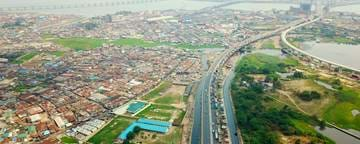Flows describe changes in the number of subscribers moving between two locations in a given direction (i.e. A to B, or B to A) over time.
CDR indicators describing flows can provide useful insights into both routine and unusual variation in population mobility.
There are two main categories of indicators that can be produced to understand flows between locations:
- Trip indicators (short-term)
- Home relocation indicators (longer-term)
Trip indicators
From CDR data, we can analyse the numbers of subscribers travelling between pairs of locations in short periods of time (hours, days), referred to as trips, and how the numbers of trips vary over time. Based on the numbers of trips between locations, we can generate additional indicators describing different aspects of human mobility such as:
- How much people move within and between regions (intra- and inter-regional travel)
- How connected different areas are and main routes of travel (connectivity)
- Median distance travelled over time, and per focal region (mobility statistics)
Trip indicators have a broad range of applications in the humanitarian and development sector. We can study commuter behaviour and identify peak times for travel over the course of a day, or peak days for travel over a week. This can provide insights, for example, into the demands for transport infrastructure and the provision of public transport. Sudden changes in flows, particularly in the aftermath of a rapid-onset disaster, may also provide indications of damage to transport infrastructure.
Human mobility indicators, especially those describing connectivity, are also very useful for predicting the geographic spread of infectious disease and identifying hotspots which might be prioritised to reduce the risk of spread to new areas. Similarly indicators describing mobility can help assess the effectiveness of government-imposed restrictions on population movements.
Home relocation indicators
For longer time periods (weeks, months, seasons), we can estimate “home relocations”, meaning generating indicators on the numbers of subscribers whose “home location” has changed from one area to another.
Home relocations can be used to describe the flows of residents in and out of regions, or the total change in the number of residents (net flow), and how this varies over time. We can also use these indicators to identify areas with large increases or decreases in the number of people staying or residing in an area.
Home relocation indicators have a broad range of applications in the humanitarian and development sector. During a humanitarian crisis for example, relocation indicators can provide insights into displacement and recovery, and trip indicators can help assess the response to warnings and identify disruptions to transportation. These indicators can also be used to understand other types of relocation, such as seasonal migrations and the origins and destinations of internal migrants.
Discover our two main categories of flow indicators
Trips
TripsHome relocation
Home relocations

